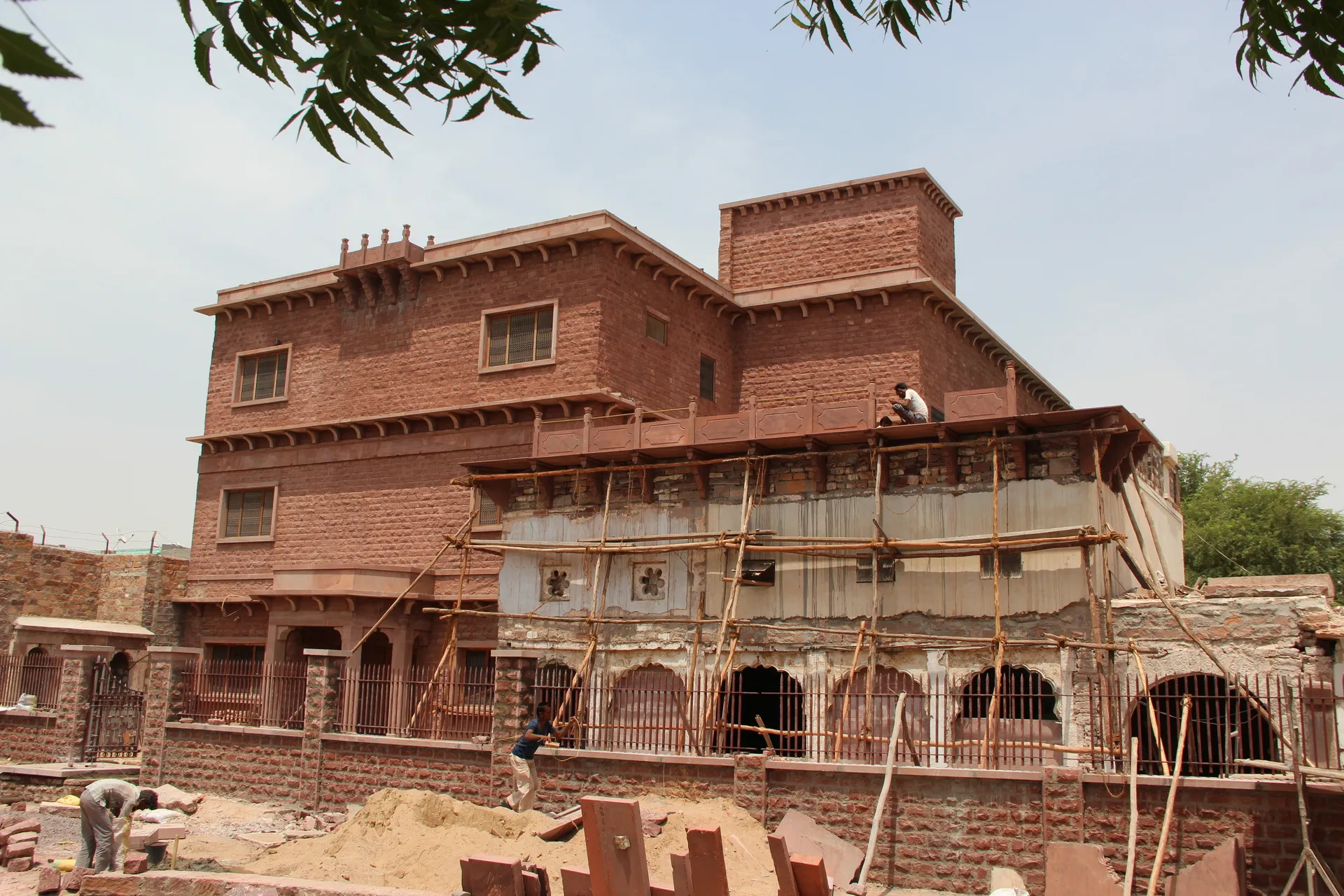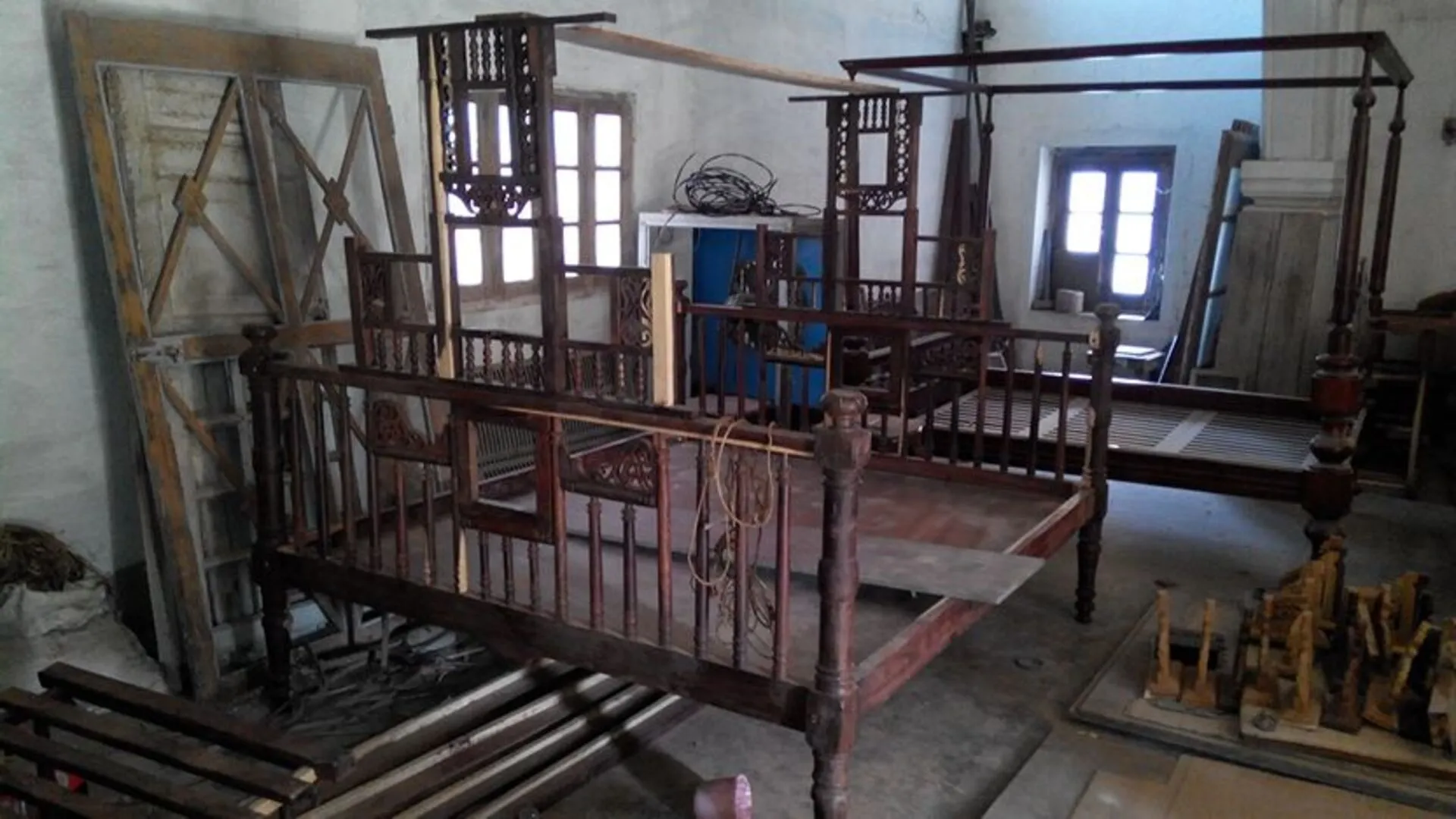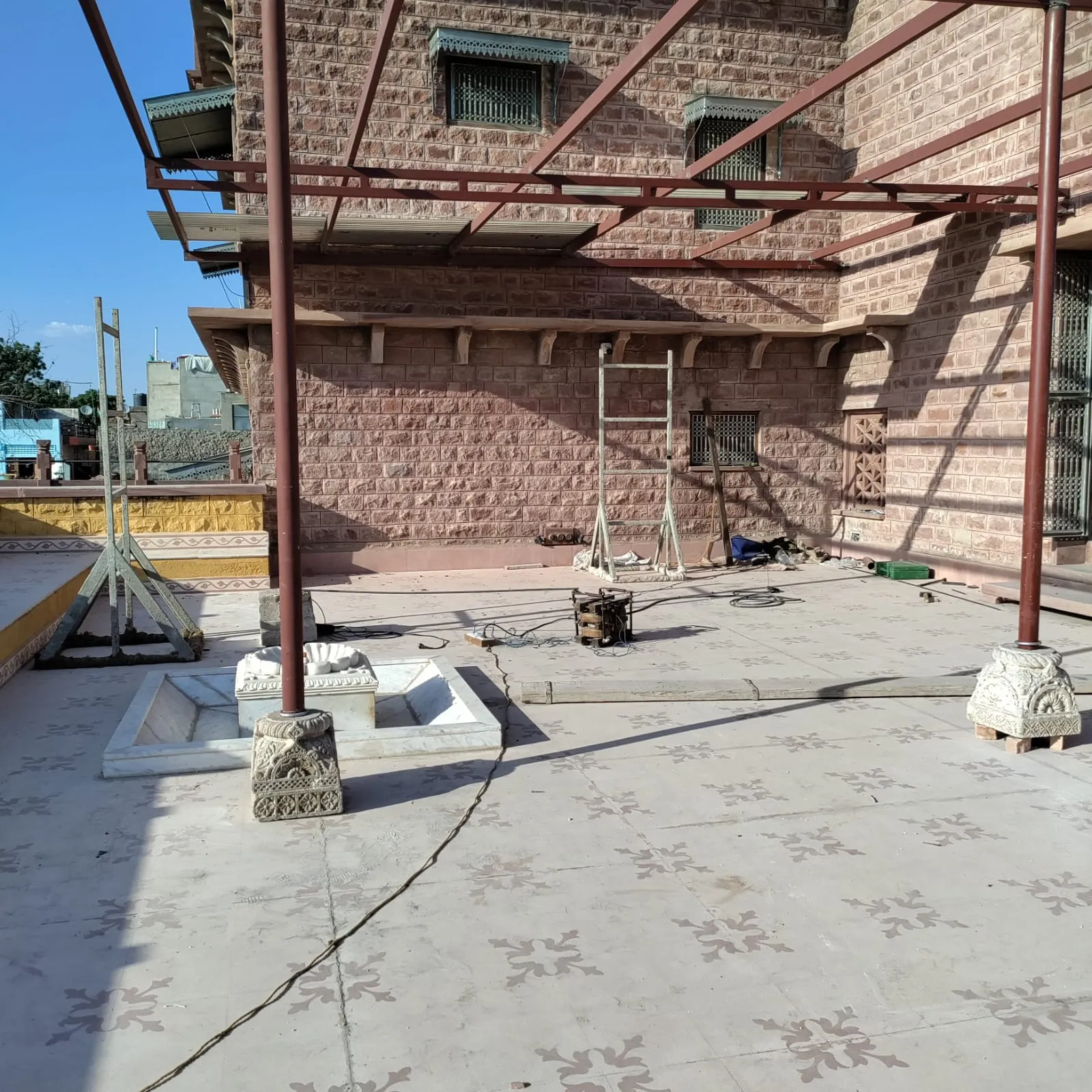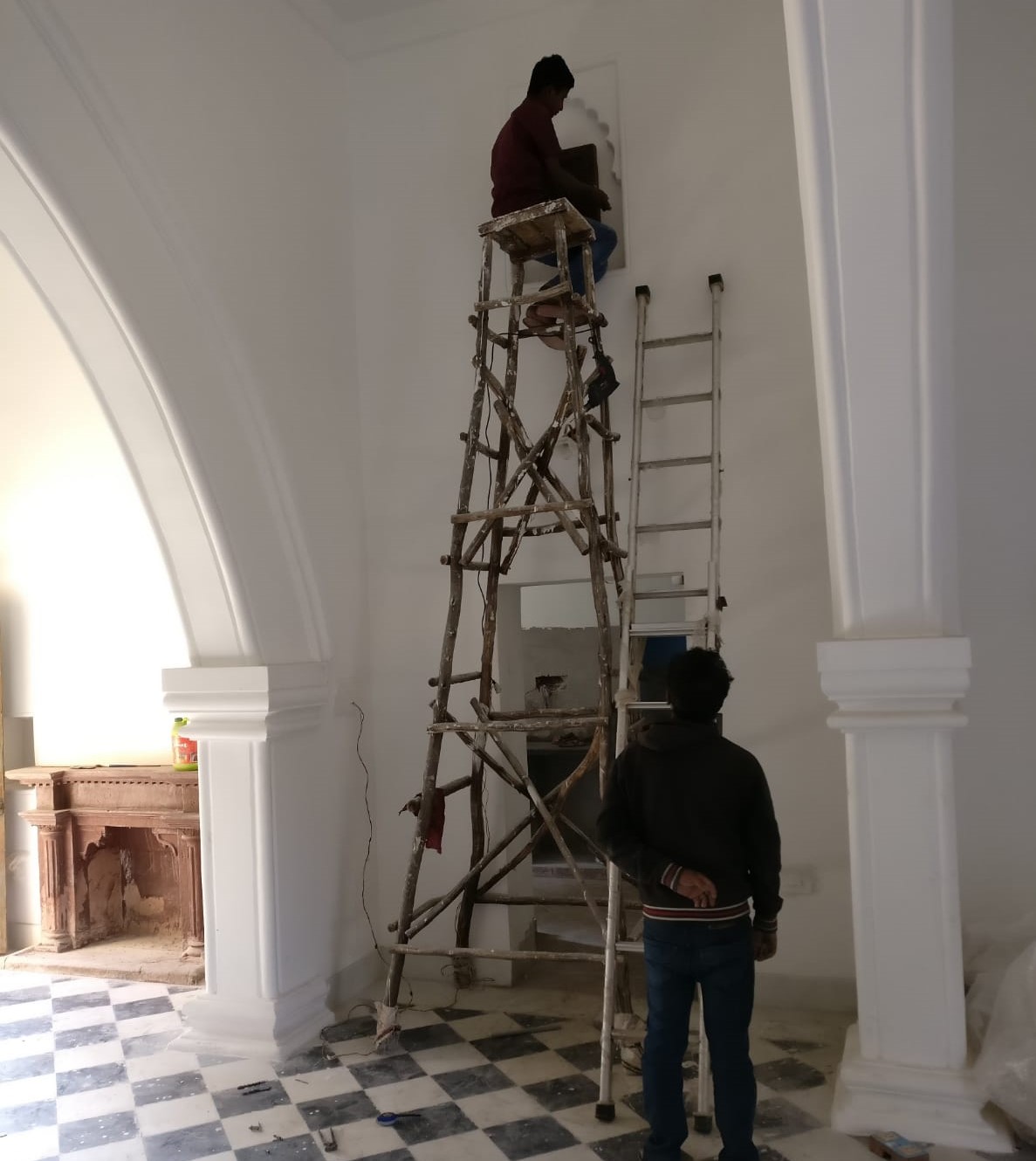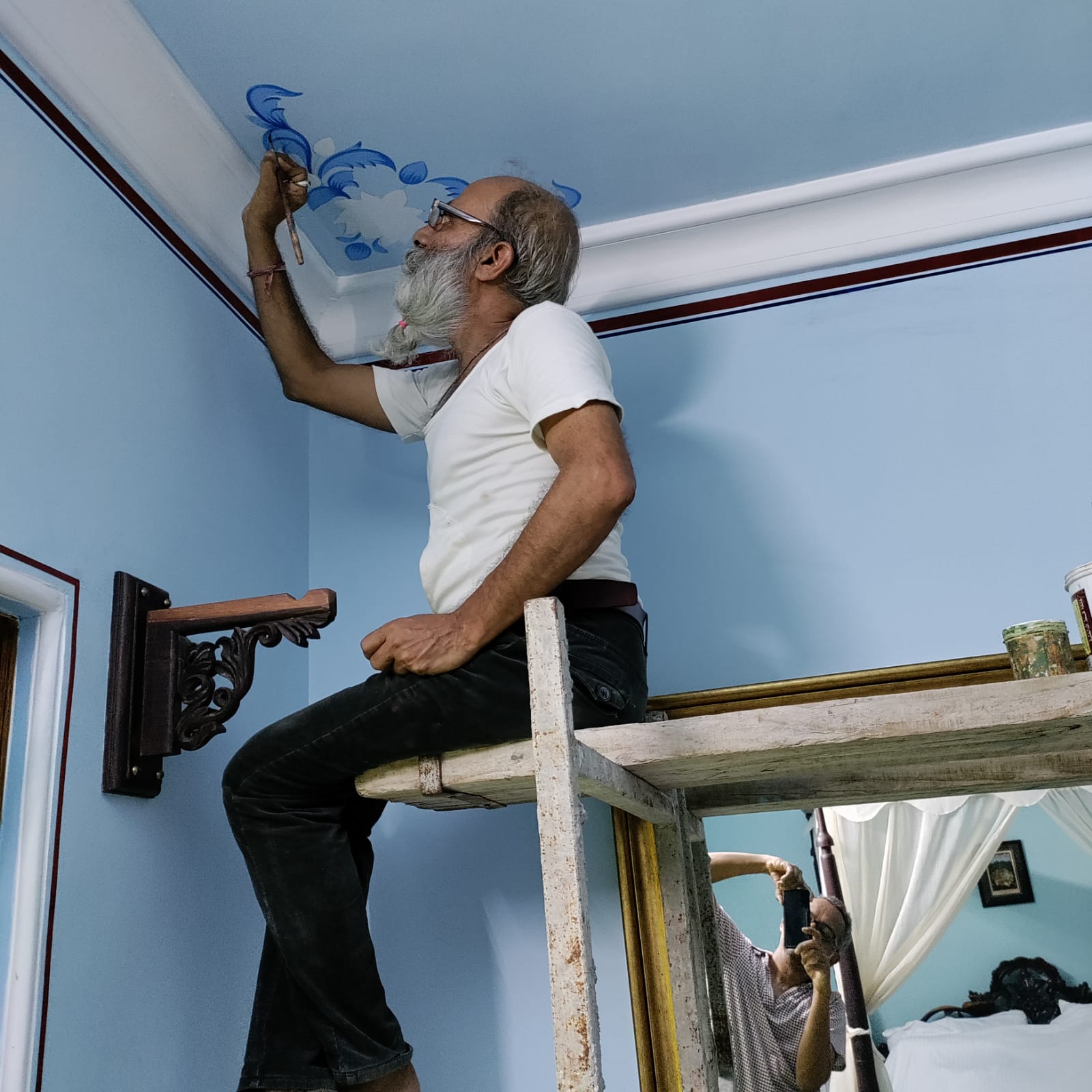Restoration
Honoring the Past, Embracing the Present
Step into the world of Bungalow 2, a place where history is cherished, and tradition is revered. Our journey to restore this remarkable property was not merely about refurbishing a building, it was a labor of love that sought to pay homage to the past while welcoming the comforts of the present.
Our foremost mission was to safeguard the authenticity of the architectural style and construction techniques that defined this house in its early days. The sandstone columns, intricate cusped peacock arches and the tranquil courtyard collectively bestow upon this bungalow an aura that truly befits a heritage structure.
Over the years, layers of history had accumulated on every surface. Burma teak doors, windows, storage cupboards and other wooden fixtures had witnessed countless occupants, from the military Officer's Mess to real estate developers and government departments. As we delicately peeled away the layers of paint and lacquer, we uncovered a spectrum of colors, each telling its own story, revealing the passage of time. The lime plaster that adorned the walls and ceilings, once meticulously applied, had, over time, been patched with cement where needed. In some instances, the original lime plaster had been veiled beneath layers of multicolored lime-washes, concealing the reddish hues of Jodhpur sandstone.

Western Rajasthan is renowned for its architectural heritage, a fusion of desert-inspired elements and colonial influences. Bungalows, palaces, forts and the dwellings of noble Rajput families all boast a distinctive blend of architectural elements like Chajjas, Todis, Jalis, Jharokhas, Mehrabs, Khambas, Varendahs and the Chowk. These features, born out of necessity, evolved over time to become both functional and decorative, sometimes acquiring spiritual significance. This melding of styles ultimately led to the birth of the Indian Bangla or Bungalow architectural style. The word "Bungalow" - much like several other terms - traces its roots back to India. However, its meaning has evolved in Western culture over time. Throughout the restoration process, our unwavering commitment was to uphold these unique architectural elements that define the soul of Bungalow 2.
Our determination to preserve the original structures was unwavering. We meticulously reused, recycled, and repaired old materials, be it old Burma teak doors, windows, sandstone pillars or intricate stone carvings. The restoration journey unveiled hidden treasures, from beautifully carved jaalis and old Mehrabs (peacock arches) to columns concealed within thick walls.
While we endeavored to retain as much as possible, certain parts of the old structure had deteriorated beyond salvation. In such cases, we painstakingly reconstructed similar structures to pay homage to the spirit of the originals.


Our skilled artisans from western Rajasthan, celebrated for their expertise, played a pivotal role in restoring and recycling old doors and windows. Wherever possible, we retained the same fittings and fixtures. In instances necessitating replacements, we diligently recreated identical brass and iron hardware.
Numerous decorative pieces, including lampshades, colonial furniture, old metal switches and intricate carvings and figurines, were sourced from various corners of India, each with its own unique history. These treasures were not only sourced from the antique & handicrafts dealers in Jodhpur but thoughtfully chosen from places like Jew Town in Cochin, Russels Street in Calcutta, Chor Bazar and Oshiwara in Bombay and Karaikudi and Athangudi in Tamil Nadu.
Bungalow 2 now stands as a testament to the harmonious blend of past and present. It is a place where history is alive and the comforts of modern living seamlessly coexist — a place we are truly proud to share with you.

